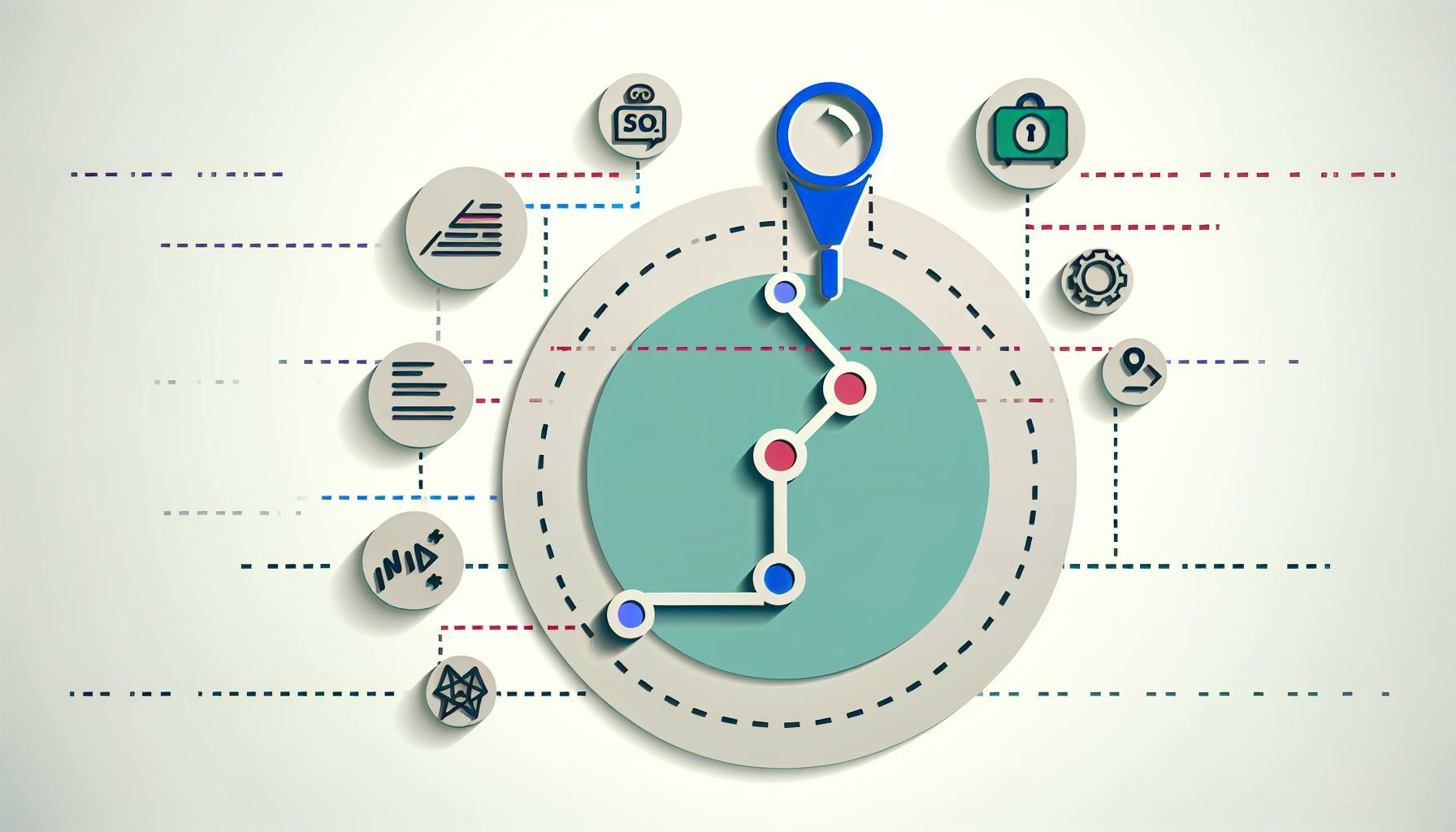Introduction
Fast and efficient indexing allows websites to be discovered rapidly on search engines, driving increased traffic, leads, and revenue. Recent advances in automation tools empower website owners to achieve lightning-fast indexing without complex coding or delays. This comprehensive guide will explore the most effective indexing techniques to transform your site's performance and visibility starting today.
Understand how leveraging quick indexing taps into Google's latest capabilities so you can maximize search exposure and clicks to your site. Discover actionable tips to implement rapid indexing strategies through solutions like IndexGoogle's pioneering auto-indexing feature.
The Growing Need for Speed in Website Indexing
Painfully slow indexing causes sites to remain 'invisible' on search engines for weeks or months, resulting in countless lost opportunities. Today's users demand instant answers and gratification - sluggish indexing simply fails their expectations. Savvy competitors are swiftly indexing new content, so delayed indexing causes you to lose clicks and revenue vs rivals.
Google's core ranking algorithms increasingly favor rapidly indexed, fresh content that engages users. Prolonged indexing periods actively damage your SEO and user experience, severely undermining performance. Simply put, fast indexing is now mandatory for competing in search.
How Google's Indexing Works and Common Bottlenecks
Google's crawler, known as Googlebot, constantly prowls the web to discover and catalog new webpages. It evaluates page content, links, site factors and more to determine how pages should rank in results. Newly discovered pages are queued to be processed and added to Google's live index.
Billions of pages compete for limited indexing capacity due to Google's fixed crawl budget. Priority is based on Google's assessment of page value, freshness, site authority and internal linking. Google aims to balance completeness of indexing with keeping its search results current.
Complex site architecture, media formats, and coding issues create major indexing obstacles. Manual submission is ineffective as Google solely relies on algorithmic crawling. Poor site crawl efficiency means pages are discovered extremely slowly, greatly delaying indexing. Google's constrained crawl budget causes sites to only be partially indexed based on automated priorities.
The Power of Automated Indexing Solutions
New solutions leverage automation and machine learning to expedite discovery and processing by Google. Advanced algorithms streamline analysis of page content, links, and technical factors. Automated tools submit pages intelligently based on Google's crawl patterns.
Indexing APIs and platform integrations optimize sitemaps and site architecture for Googlebot crawling. Smart systems queue priority pages and fresh content for rapid indexing. Leading solutions like IndexGoogle form partnerships with Google for direct API access and additional capacity.
Choosing the Right Automated Indexing Service
When evaluating indexing services, prioritize speed - the fastest tools can index pages within hours after publishing. Assess technical capabilities based on Google API access, integrations, and site compatibility. Verify Google partnership status for leveraging their latest indexing technology.
Review customer testimonials and real examples of indexing performance gains. Compare ease of setup, configuration, and ongoing site management. IndexGoogle stands out with hourly indexing speeds via an exclusive Google partnership. Indexify and Stackie also offer strong capabilities to automate and improve crawling.
Critical Indexing Strategies and Best Practices
Leverage optimized sitemaps and internal linking to improve crawl efficiency. Build high-quality backlinks from reputable external sites to signal value. Produce engaging, useful content that earns links organically. Simplify site architecture and eliminate crawl roadblocks.
Monitor indexing speed in Google Search Console for diagnostics. Analyze Googlebot crawl spikes to understand indexing patterns. Study competitors who index faster to identify site optimizations. Continuously optimize pages for maximum crawlability and indexation potential.
How Leading Indexing Platforms Achieve Speed
Now that you understand the basics, let's explore how top indexing solutions stack up and accelerate discovery across key capabilities. Learn how automation can completely transform legacy manual indexing approaches.
See how IndexGoogle's patented technology indexes in just hours by integrating directly with Google's systems. Evaluate other top contenders like Indexify, Stackie, and RankActive on critical criteria. Identify options suited for sites both large and small.
Comparing Key Indexing Features
Speed - How rapidly are new pages indexed and seen by Google? The fastest services can index in under 1 hour.
Automation - Does the tool automatically submit new URLs or require manual action? Full automation is ideal.
Google Integration - Does it offer direct API access or official partnerships with Google? This enables optimal indexing.
Crawl Optimization - Are site architecture, internal links, and sitemaps enhanced for indexing?
Ease of Use - How difficult is the setup and are coding skills required?
Unlocking the Power of Google's Indexing System
Googlebot constantly crawls the web to discover and evaluate billions of pages. Each page must be processed and added to Google's live index before it can rank. But Google's crawl budget limits total pages indexed per day.
Priority is based on Google's judgement of page value, freshness, authority, internal links, etc. Google aims for both comprehensive indexing and fresh results. Crawling and indexing takes time, so speed optimizations are critical.
How Automated Indexing Platforms Achieve Speed
Direct API Indexing - New URLs are sent immediately to Google for indexing via their API.
ML Optimization - Machine learning identifies and optimizes pages likely to perform well.
Strategic Queueing - Pages are queued for timed release to maximize indexing within crawl budget.
Google Partnerships - Direct partnerships enable access to additional indexing capacity.
Site Architecture - Enhanced site structure and internal linking improves crawlability.
Evaluating the Top Indexing Solutions
IndexGoogle offers unmatched indexing measured in hours through an exclusive Google partnership and patented technology.
Indexify provides API indexing along with site audits to improve crawlability.
Stackie focuses on technical site optimizations for improved discoverability and indexing.
RankActive provides manual indexing submission focused primarily on small sites.
Indexdera had initial promise but now has mixed reviews from users.
When Automated Indexing Delivers the Most Value
- Large sites with many new pages added frequently that are challenging to index manually.
- Complex sites with media formats like video and audio that Google struggles to process.
- Highly competitive niches where gaining an indexing speed advantage is critical.
- Businesses with revenue directly tied to search visibility and traffic.
- Brands urgently needing exposure like new product launches.
Actionable Tips to Optimize Your Indexing Strategy
Building on what you've learned, let's explore actionable tips to optimize your overall indexing strategy. Follow these best practices to maximize the impact of rapid indexing on your site's performance and visibility.
Crafting an Indexing-Optimized Content Strategy
- Research valuable topics and keywords with strong search volume.
- Produce highly useful, engaging content optimized for links and shares.
- Promote and distribute content through social media, email, and influencer outreach.
- Analyze search visibility in Google Analytics and Search Console.
- Route new pages for rapid automated indexing to capitalize on momentum.
Configuring Your Site Architecture for Faster Indexing
- Simplify site architecture with a flat hierarchy to avoid deep pages.
- Consolidate media formats into HTML pages with transcriptions.
- Enable indexing in robots.txt and avoid blocking page resources.
- Leverage XML sitemaps and submit them in Search Console.
- Limit large file sizes or page lengths that slow crawl budget.
Getting the Most From Your Indexing Service
- Compare indexing speed timeframes to choose the fastest option like IndexGoogle.
- Verify Google partnership status for direct API access.
- Assess site crawlability before integrating to avoid blockers.
- Understand technical limitations around page types, sizes, etc.
- Use available crawl optimization features to their full potential.
Monitoring and Maintaining Peak Indexing Performance
- Check indexed page count regularly in Search Console.
- Review indexing speed for new pages using first-time index dates.
- Watch for Google warnings about technical issues hindering crawling.
- If speeds slow, check for Google algorithm updates impacting priorities.
- Keep creating high-quality content to sustain results long-term.
The Future of Automated Indexing Technology
- CMS plugins will enable triggering indexing from publishing platforms.
- Machine learning will fully automate optimal crawl prioritization.
- Knowledge Graph integration will provide more context for smarter indexing.
- Partnerships will facilitate personalized Google support for large sites.
- Indexing speed and capacity will continue to accelerate rapidly.
Conclusion
Implementing an indexing optimization strategy with solutions like IndexGoogle can profoundly accelerate your website's search visibility and user engagement. By structuring your site for rapid automated discovery and leveraging direct Google integrations, you enable lightning-fast crawling, processing, and indexing.
This guide provided actionable tips to choose the right indexing tools, optimize your architecture, content, and publishing workflow. With search competition continuously rising, automated indexing is now mandatory to rank quickly and stay ahead. Leverage these latest innovations to maximize your competitive advantage.


